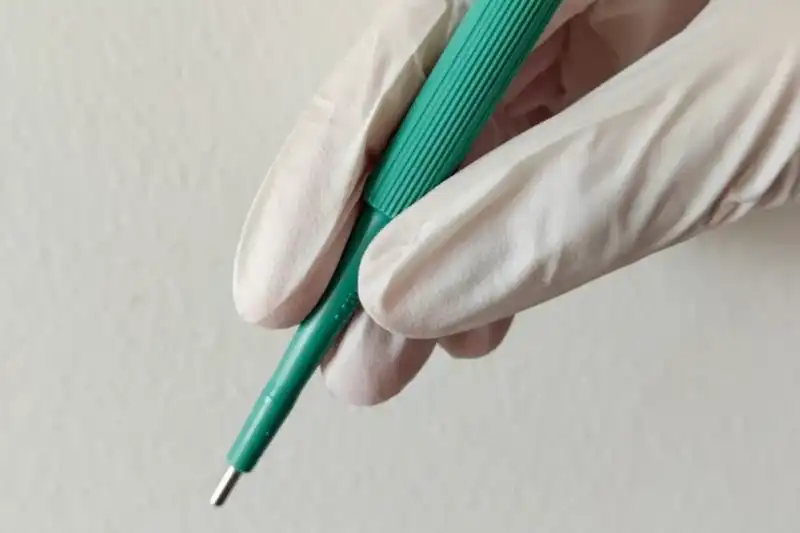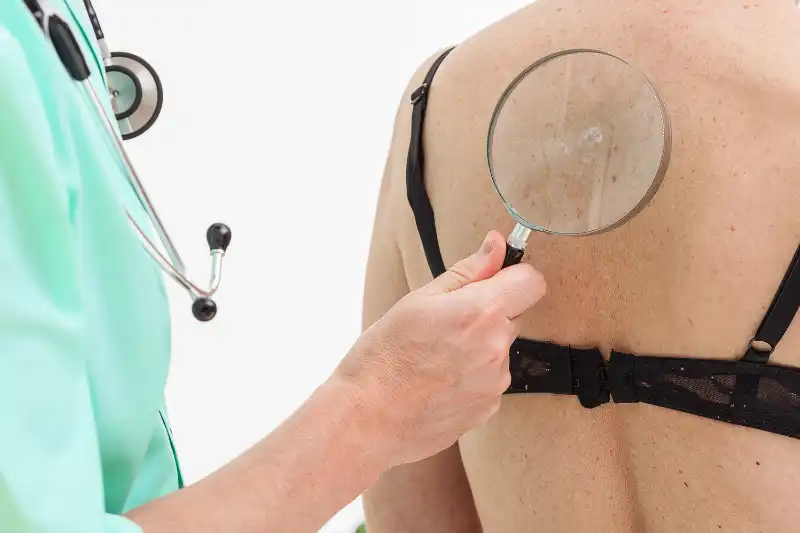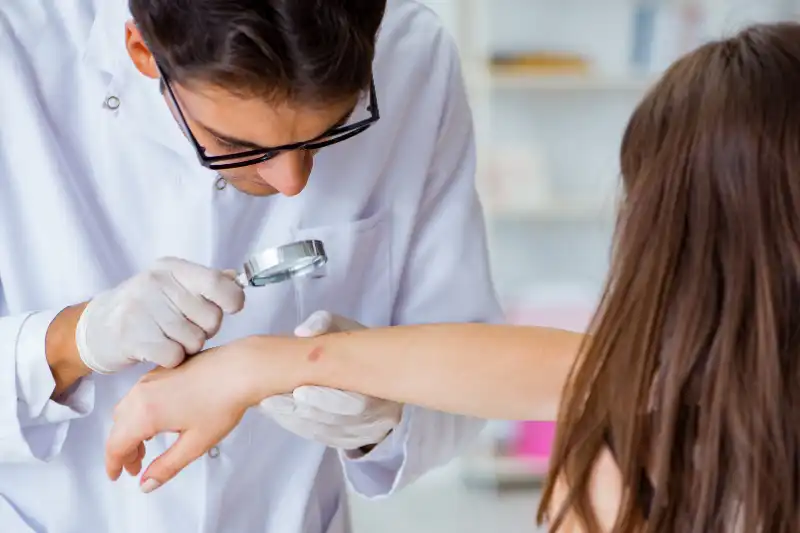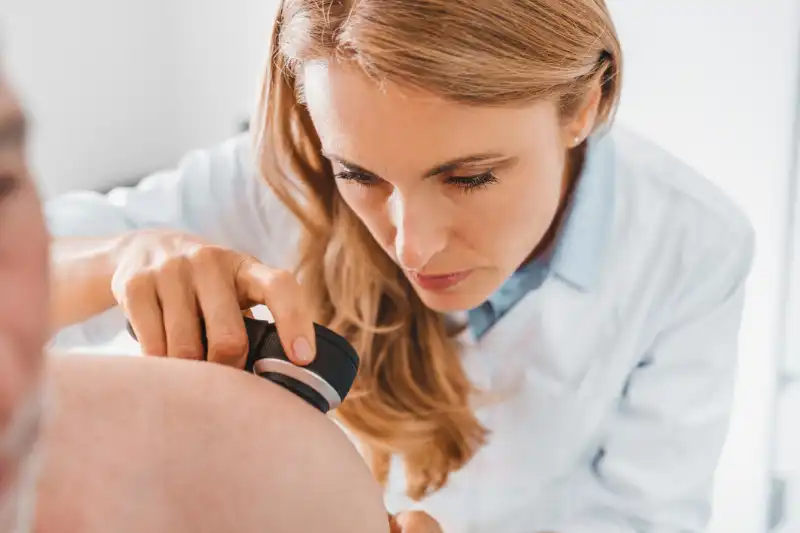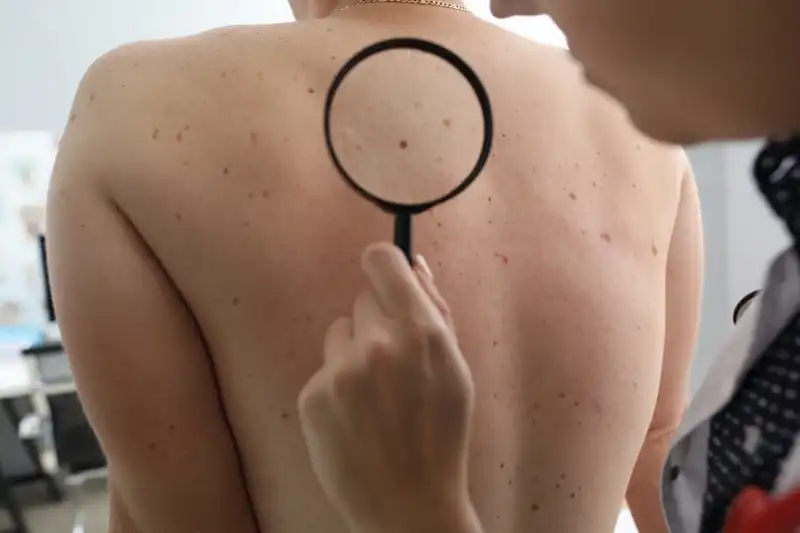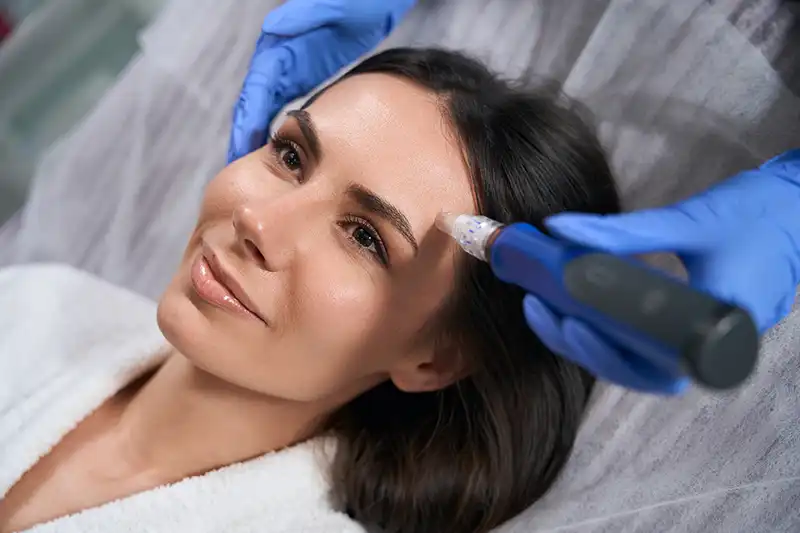What Is a Biopsy?
As a diagnostic tool, a biopsy can help to determine your condition and better plan the appropriate treatment. This fast and easy procedure where a sample of cells, tissue, or fluid is taken to check for skin cancer and other diseases.
Common Biopsy Procedures at Premier Partners in Dermatology in Pittsburgh, PA:
- Shave Biopsy: Dr. Stuckert will use a sharp tool to gently shave off the raised part of the skin problem. This is often done for things like moles or raised spots.
- Punch Biopsy: In this type, Dr. Stuckert will use a circular tool to take a small, round piece of akin. He will grab a bit of the top layer (epidermis), the deeper layer (dermis), and sometimes a bit of the fat underneath (subcutaneous fat). This method helps diagnose many different skin conditions.
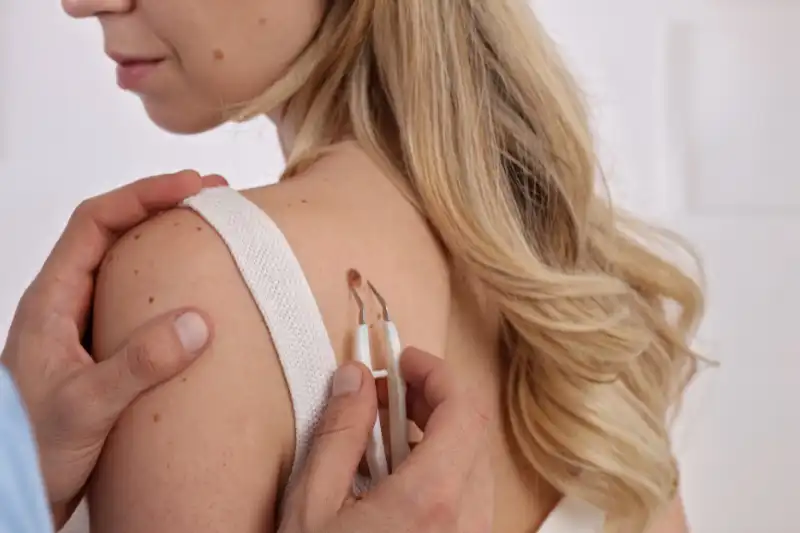
Signs and Symptoms That You Need a Biopsy
Your skin is your body’s largest organ, and just like any organ, you want to keep it healthy. This means keeping an eye out for signs and symptoms of potential skin issues.
Common signs and symptoms that you need a biopsy:
- Changes in Moles or Lesions: Any mole or skin lesion that changes in size, shape, color, or elevation may raise concerns. Look out for the “ABCDE” features of melanoma:
- Asymmetry: One half doesn’t match the other.
- Border: The edges are irregular, scalloped, or poorly defined.
- Color: Varies from one area to another; shades of tan, brown, black, white, or even red, blue, or (most concerning) multiple colors.
- Diameter: Melanomas are often larger than 6mm (the size of a pencil eraser), but they can be smaller.
- Evolving: A mole or skin lesion that changes in size, shape, or color.
- Persistent Sores: Wounds or sores that fail to heal within a few weeks should be checked by a medical professional.
- Unexplained Rash: An unexplained skin rash that persists or fails to respond to treatment may require further investigation.
- Scaly or Rough Patches: Thickened, scaly, or rough skin patches could be a sign of precancerous cells or skin cancer.
- Dark Spots or Patches: New or changing dark spots on the skin could signal a problem.
- Persistent Itching or Pain: Any skin lesion or mole that becomes persistently itchy or painful should be evaluated.
- Bleeding or Oozing: Abnormal bleeding or discharge from a skin lesion or mole could indicate a more serious issue.
- History of Skin Cancer: Previous cases of skin cancer increase the likelihood of developing new ones. Regular monitoring and screenings are crucial for individuals with a history of skin cancer.
- Non-healing Ulcers: Open sores that refuse to heal, particularly in sun-exposed areas, merit attention.
- Nodules or Lumps: Any new growth or lump on the skin, especially if it appears irregular or grows quickly, deserves examination.
Early detection of a skin condition is key to treatment. If you think you might need a biopsy, don’t hesitate to schedule an appointment with us today.

How Does a Skin Biopsy Work?
Before a skin biopsy, you might need to put on a gown based on the biopsy location. The chosen area is carefully cleaned and marked for precise identification. To prevent discomfort during the biopsy, a local anesthetic is then injected to numb the biopsy site. Here’s a step-by-step overview of how a biopsy works:
Preparation:
- The area to be biopsied is cleaned with an antiseptic solution.
- A local anesthetic is often injected to numb the area, ensuring the procedure is painless.
Choosing the Biopsy Type:
- The type of biopsy used depends on factors like the suspected diagnosis, lesion size and location, and the clinician’s preference.
- Common types include shave biopsy (for raised lesions), punch biopsy (removes a cylindrical sample), excisional, and incisional.
Performing the Biopsy:
- Shave Biopsy: A scalpel is used to remove the top layer of skin.
- Punch Biopsy: A circular tool removes a cylindrical skin sample.
- The biopsy site is treated to stop bleeding, which may involve cauterization, chemicals, or stitches for larger biopsies.
- A bandage is applied, and the skin sample is preserved in a solution and sent to a lab.
Laboratory Analysis:
- A pathologist examines the skin sample under a microscope.
- The pathologist determines whether the cells are benign (non-cancerous), malignant (cancerous), or indicative of other skin conditions or infections.
Results:
- Results are typically available within days to a few weeks, depending on the lab and findings.
- Dr. Stuckert will discuss the results and recommend further treatment if needed.
Aftercare:
- Keep the biopsy site clean and dry to prevent infection.
- Follow specific aftercare instructions based on the biopsy’s size and location, which may include avoiding certain activities or using antibiotic ointment.

